I love Filipino breakfast food. Silog dishes like longsilog and tapsilog are among my favorite dishes to eat when we’re back in the Philippines. Not just for breakfast, but at any time of the day.
Silog refers to a group of Filipino breakfast dishes comprised of meat, garlic rice, and a fried egg. It exists in many variations and can be found pretty much anywhere in the Philippines. Like Malaysian nasi lemak, it’s an exceedingly popular Filipino breakfast dish that can be enjoyed throughout the day.
Silog is a definite must-try but early risers will have lots more to wake up for in the Philippines. If you prefer breads and pastries for breakfast, then try pan de sal and ensaymada. If thick rice porridge meals are your jam, then you can tuck into a bowl of arroz caldo or champorado.
Silog may be one of the most well-known and delicious Filipino breakfast dishes, but as this list will show you, it’s just one of many in Filipino cuisine.
If you think breakfast is the most important meal of the day, then be sure to try these twelve delicious Filipino breakfasts on your next trip to the Philippines.
Save This on Pinterest!
No time to read this article on Filipino breakfast foods? Click on the save button and pin it for later!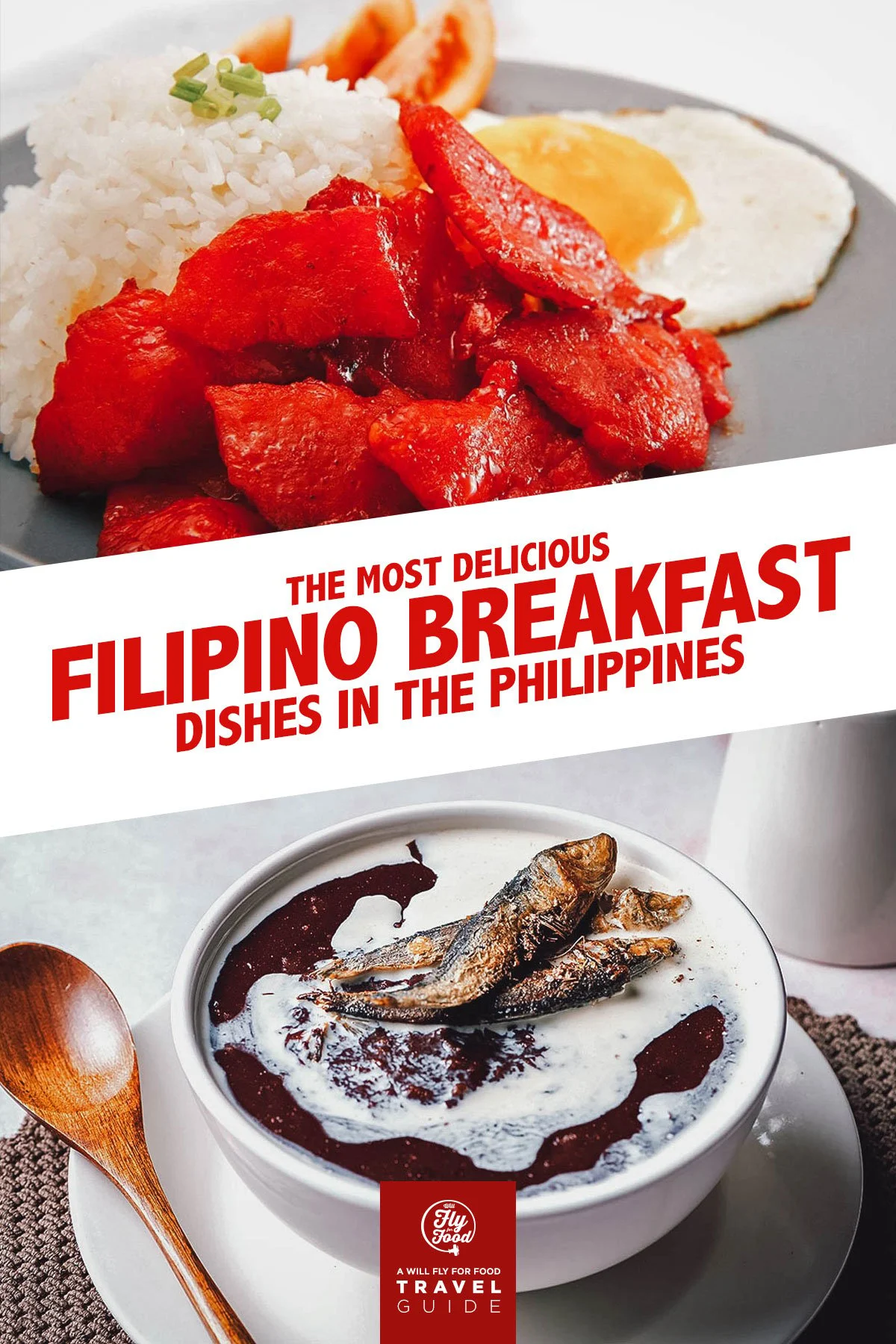
Photos by junpinzon and Loybuckz
THE MOST DELICIOUS FILIPINO BREAKFAST DISHES
1. Silog Meals (Meat with Garlic Fried Rice and Egg)
No list of the most delicious Filipino food can ever be complete without silog. As described, it refers to a popular Filipino breakfast dish consisting of some type of meat served with Filipino garlic fried rice and sunny side up eggs.
The garlic fried rice and fried eggs are constants in silog meals but this beloved breakfast dish can take on many forms depending on the meat it’s made with. Tapsilog (beef tapa), longsilog (Filipino sausage), and tocilog (sweet cured meat) are the three most popular but you’ll find plenty more in the Philippines like bangsilog (milkfish), cornsilog (corned beef), and spamsilog (SPAM).
Enjoyed with a vinegar dipping sauce, silog is one of my absolute favorite breakfast meals in the world and something that you should try when you visit the Philippines. Check out my article on silog meals for more on this delicious Filipino breakfast dish.
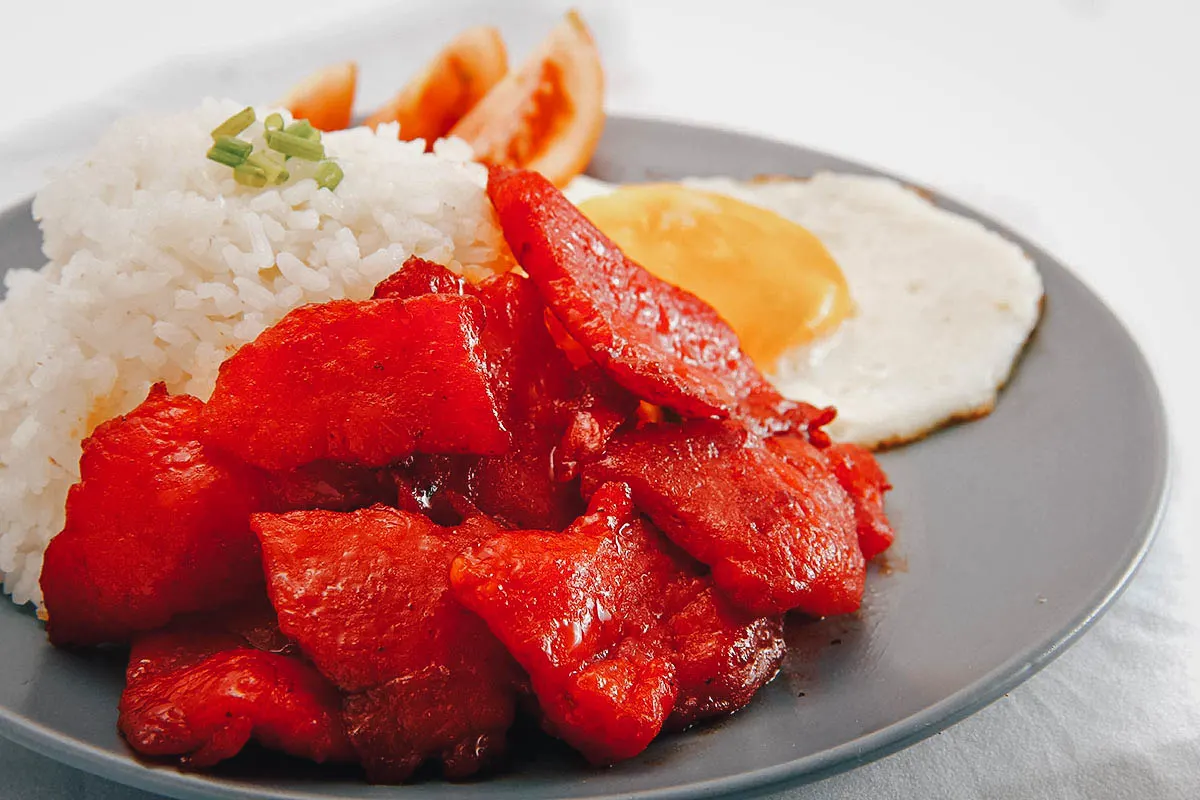
Photo by junpinzon
2. Tuyo / Galunggong / Tinapa
Being an archipelago of over 7,100 islands, the Philippines is home to an abundance of delicious seafood. Bangus or milkfish is the national fish of the Philippines and the main component in bangsilog, one of the most popular types of silog.
Other popular species or preparations of fish that are commonly eaten for breakfast in the Philippines include galunggong, tuyo, and tinapa. Galunggong is the Filipino word for “mackerel scad”. Considered a poor man’s breakfast dish, it’s commonly fried in oil and eaten with plain rice.
Tuyo and tinapa also refer to Filipino fish dishes that are commonly eaten for breakfast in the Philippines. However, they pertain more to styles of fish preparation than actual species of fish.
Tuyo means “dry” and refers to salted dried fish, usually herring. It’s a very salty fish dish that’s commonly paired with steamed white rice. Like galunggong, it has a reputation for being poor man’s food, though more gourmet versions of tuyo are commonly sold in the Philippines.
Similarly, tinapa means “smoked” in Filipino and refers to smoked fish, usually blackfin scad or milkfish. They’re often paired with rice and eaten as a breakfast dish.
Of course, when any of these fish dishes are eaten with garlic fried rice and fried eggs, then they become a type of silog.
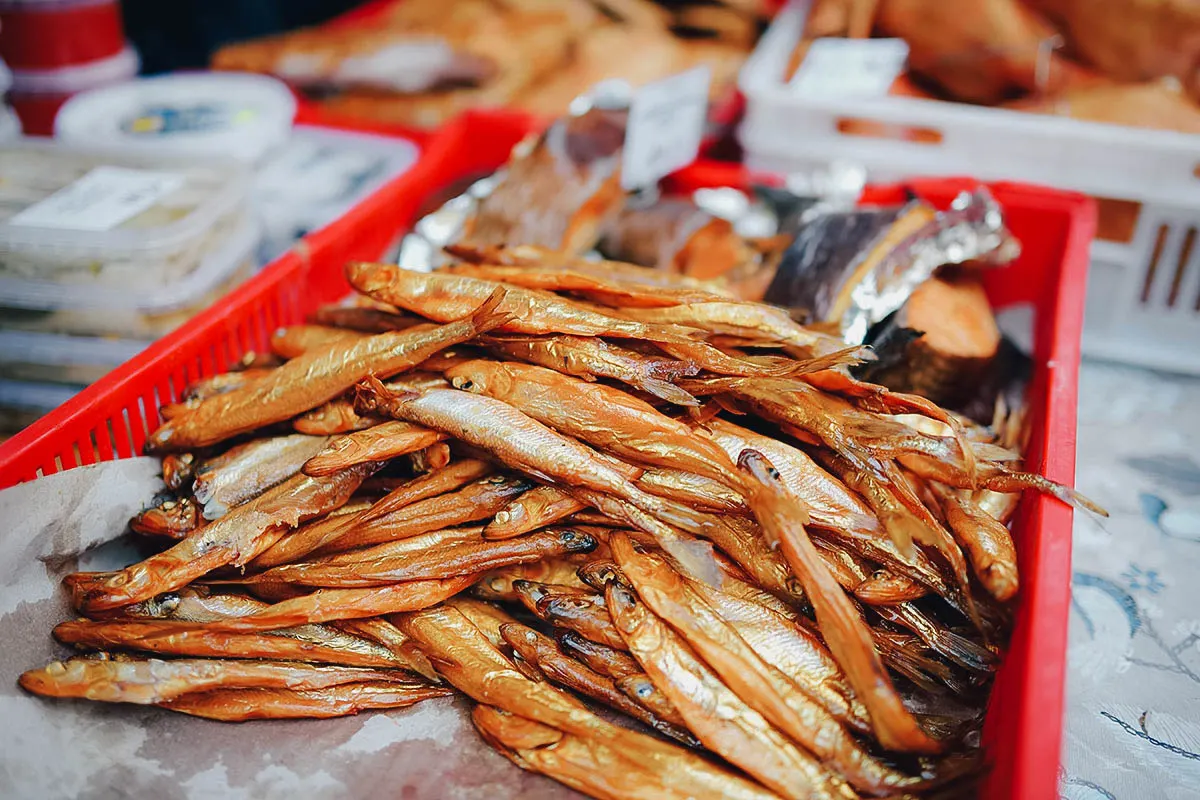
Photo by MNStudio
3. Beef Pares
In the Philippines, rice is life so the most popular Filipino breakfast dishes are often paired with rice, either garlic fried rice or steamed rice. SPAM is a favorite viand for silog, as are Flipino hot dogs. Heck, I can even take you to places that serve Chinese siomai with garlic rice and fried eggs for breakfast!
One popular carinderia (humble Filipino restaurant) dish that makes for delicious breakfast food is beef pares. It refers to a type of Filipino braised beef stew that’s commonly served with garlic rice and a bowl of clear beef stock. The term pares literally means “pairs” and refers to the practice of pairing the beef stew with fried rice and soup.
When prepared well, the meat in beef pares is incredibly tender and goes amazingly well with fried rice. Often served with a chili dipping sauce, it has a savory-sweet flavor after being stewed in a sweet soy sauce.
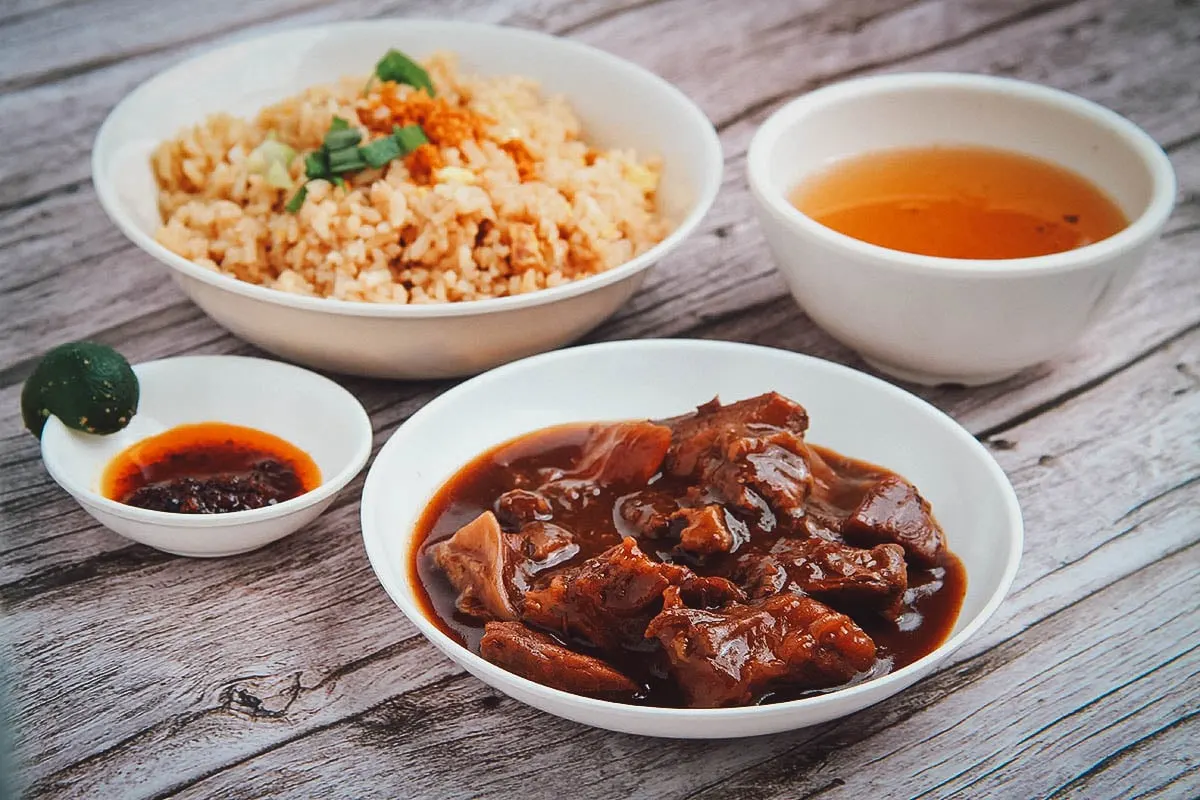
Photo by junpinzon via Shutterstock
4. Champorado (Chocolate Rice Porridge)
As a kid, I used to watch my dad dig into bowls of champorado for breakfast. At the time, I found it odd to mix chocolate with rice but there he was, happily eating spoonfuls of this chocolate rice porridge with bits of tuyo or danggit (dried rabbitfish) for breakfast.
Champorado refers to a thick rice porridge made with boiled glutinous rice and chocolate. It’s typically eaten for breakfast or for merienda (afternoon snack) with coconut milk (or regular milk), sugar, and pieces of dried salted fish.
As weird as that combination may sound for some people, it’s a popular Filipino breakfast dish that you should definitely try in the Philippines.
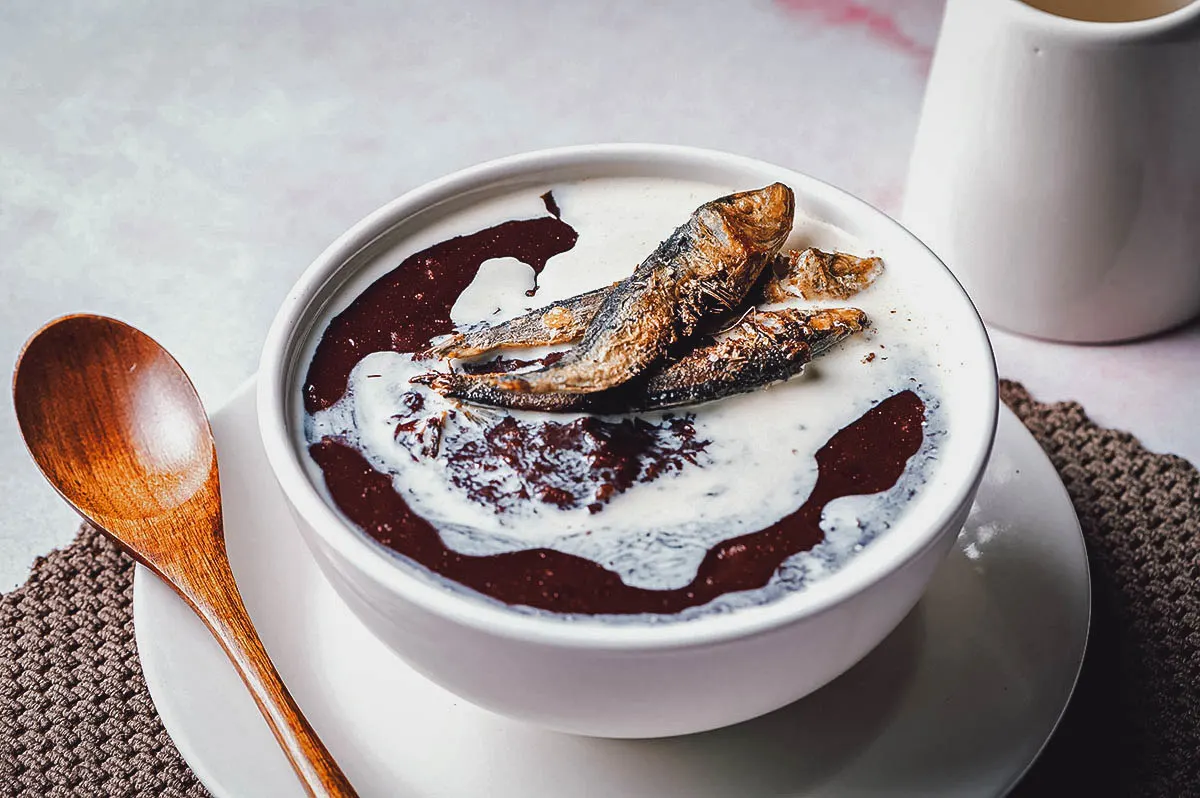
Photo by Loybuckz via Shutterstock
5. Lugaw / Arroz Caldo / Goto
If you’d prefer a savory bowl of rice porridge for breakfast, then look no further than lugaw. It refers to a bowl of Filipino rice porridge made with boiled glutinous rice seasoned with garlic, ginger, and salt.
When served on its own, the bowl of porridge is known simply as “lugaw”. But when it’s made with tripe and intestines, it becomes known as “goto” (pictured below). When served with chicken, it’s referred to as “arroz caldo”.
Whatever it’s made with, lugaw is often topped with chopped scallions, toasted garlic bits, and a hard-boiled egg. It’s typically served with calamansi, patis (fish sauce), or toyo (soy sauce) as condiments.
No matter the version, Filipino rice porridge is delicious and makes for a great Filipino breakfast dish or afternoon snack.
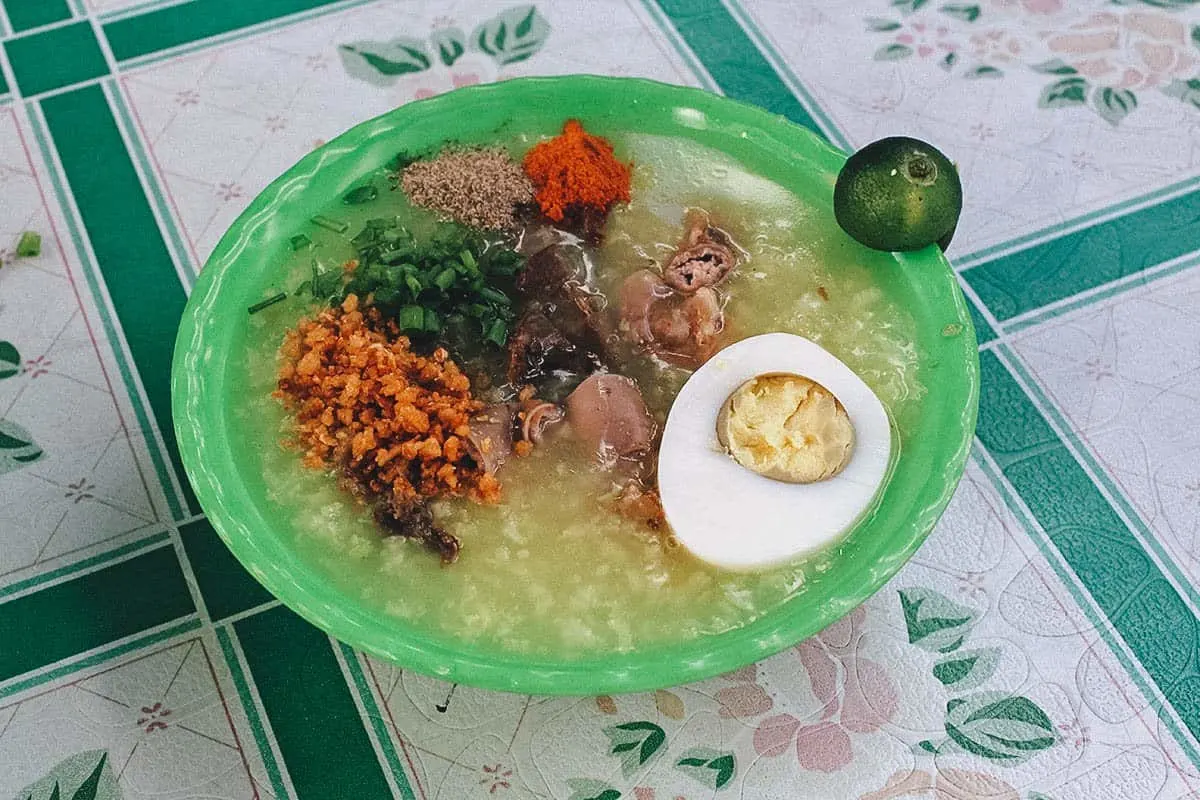
6. Mami Siopao
If you’re into noodles more than rice, then perhaps you’d like to wake up to a bowl of chicken mami soup instead. Mami refers to a popular Filipino-Chinese noodle soup made with wheat flour noodles and some type of meat (typically chicken, beef, or pork) or wonton dumplings.
Mami can be enjoyed on its own but it’s best when paired with siopao, another Filipino-Chinese dish. A type of baozi, siopao refers to a type of steamed bun that can be stuffed with different fillings, most commonly pork asado (braised barbecued pork) or bola-bola (ground meat mixture).
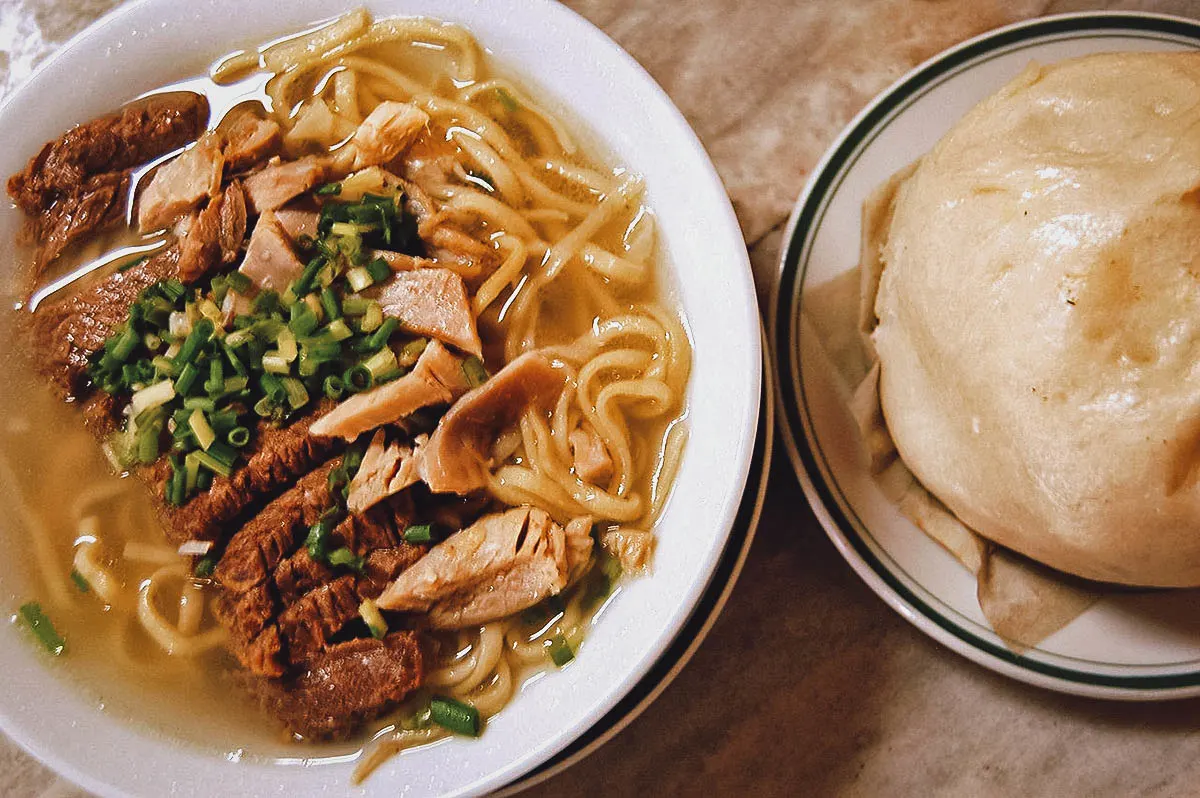
Photo by ~MVI~ on flickr, CC BY 2.0, via Wikimedia Commons / Processed in Photoshop and Lightroom
7. Taho
When it comes to Filipino dishes that conjure fond memories of childhood, taho is at the top of the list. It refers to the Filipino version of douhua, a Chinese silken tofu dish that’s served in some form in many countries throughout Asia. In the Philippines, it’s typically served warm with arnibal (simple syrup) and sago (similar to tapioca pearls).
Taho is traditionally sold by Filipino street food vendors carrying two aluminum buckets strung from either end of a bamboo pole. The vendors would comb the neighborhoods yelling “tahooooo!”, either early in the morning or sometime in the afternoon.
In our village, the taho vendor would come in the afternoons so we’d have it as a snack, but it’s just as enjoyable when eaten for breakfast in the Philippines.

Photo by junpinzon
8. Suman
In the Philippines, the term “kakanin” refers to a family of Filipino dishes made with galapong or glutinous rice paste. Puto is perhaps the most well-known but suman isn’t far behind.
Suman refers to a type of kakanin made with glutinous rice that’s cooked in coconut milk and then tightly wrapped in banana leaves before being steamed. Available in many versions throughout the Philippines, it’s typically eaten for breakfast with a sprinkling of sugar or drizzled with latik (caramelized coconut cream syrup).
Like adobo, suman is one of the most important dishes in Filipino culture and cuisine. It’s something you have to try when you visit the Philippines.
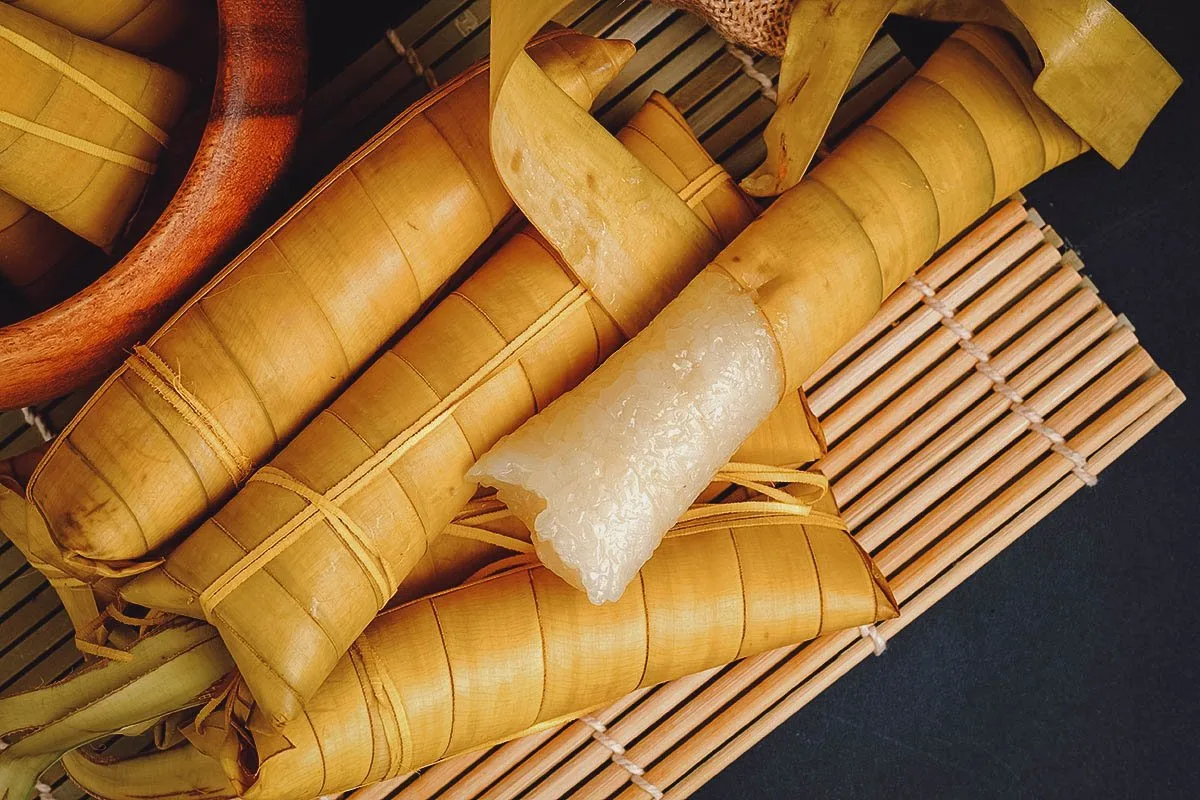
Photo by hendraxu
9. Pan de Sal
As previously described, the Philippines is all about rice so Filipino cuisine isn’t known for its bread. However, the one type of bread that’s commonly eaten in the Philippines is pan de sal. It refers to soft Filipino bread rolls made with wheat flour (and/or bread flour), yeast, salt, sugar, and oil.
I’ve always found the term pan del sal to be a bit confusing. It literally means “salt bread” but pan de sal tastes slightly sweet and not at all salty.
In any case, it’s a tasty type of Filipino bread that’s commonly eaten for breakfast, either on its own with hot coffee or stuffed with a filling like corned beef or canned sardines.
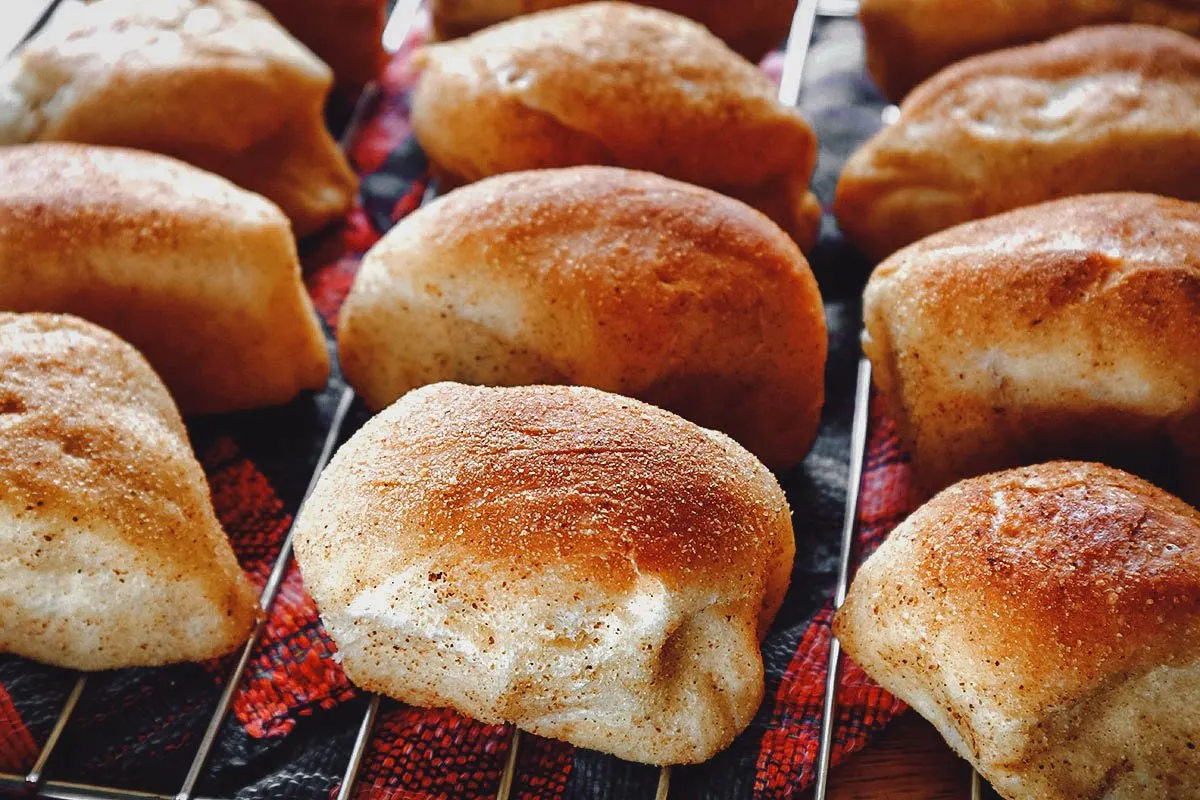
Photo by junpinzon
10. Ensaymada
The Philippines was a colony of Spain for 333 years so it’s no surprise that Spanish food traditions have left a noticeable impact on Filipino cuisine. Of the many Spanish-influenced Filipino dishes, ensaymada is one of my favorites.
Ensaymada refers to a Filipino brioche bread with Mallorcan roots. The Spanish original is made with a type of reduced pork lard called saïm. Instead of lard, the Filipino version is made with butter and topped with buttercream, sugar, and grated cheese, typically queso de bola (Edam cheese).
In the Philippines, ensaymada is commonly eaten for breakfast or as a snack. It’s available throughout the year though it becomes especially popular during the Christmas season. Boxes of specially made premium ensaymada are often given as gifts between family and friends.
Ensaymada is delicious any which way but I like it best after it’s been heated for a few seconds in a toaster oven. Pair it with a cup of good coffee or Filipino hot chocolate and you’re golden.
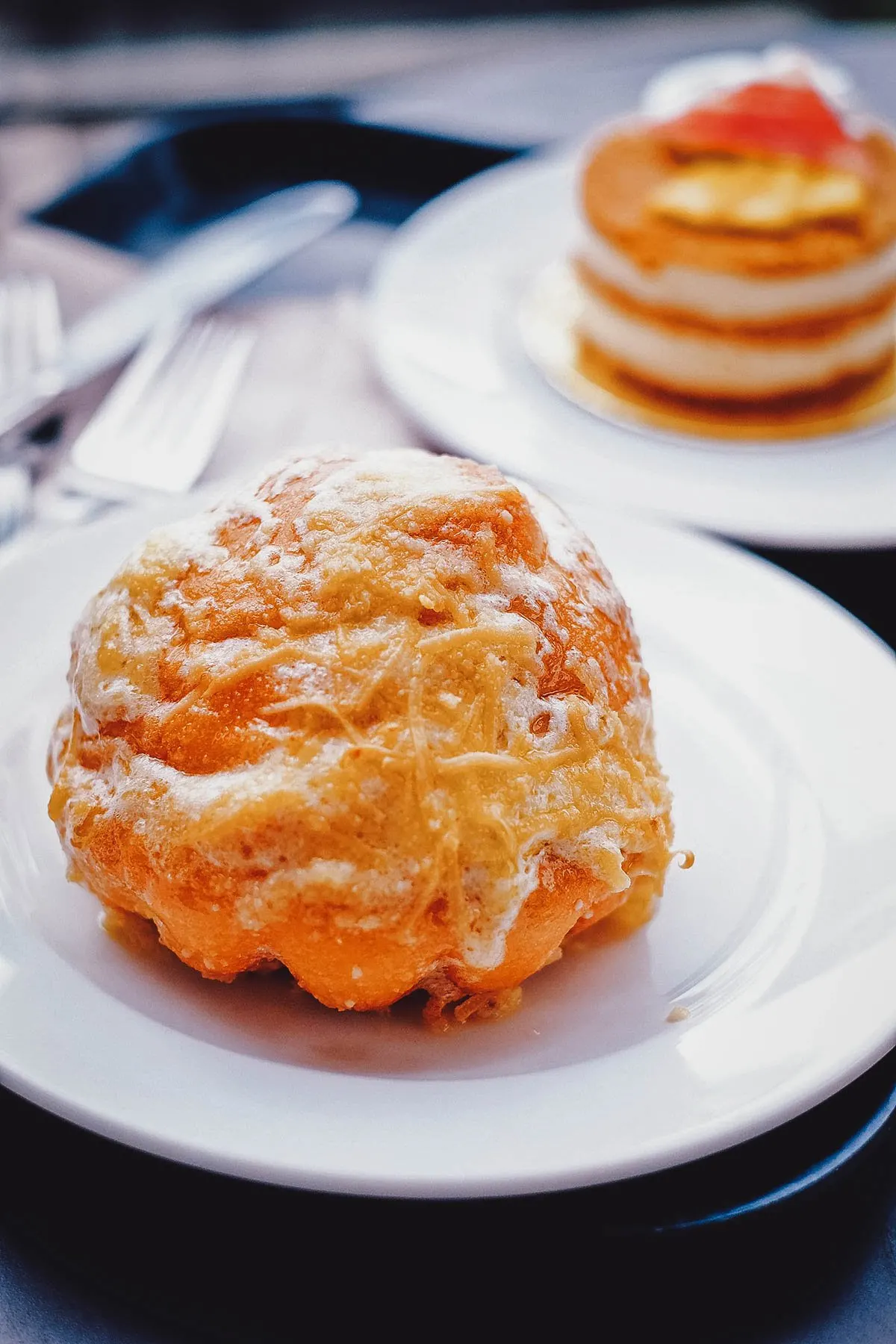
Photo by nuitgarden
11. Bibingka
Like ensaymada, bibingka holds special significance during the holiday season. A type of kakanin, it’s available throughout the year though it’s a dish that’s traditionally associated with Christmas in the Philippines.
Bibingka refers to a Filipino rice cake made from glutinous rice flour and coconut milk. Unlike other types of kakanin that are usually steamed, bibingka is baked in a clay pot lined with banana leaves. It’s cooked between two layers of charcoal until the top of the rice cake turns a beautiful golden brown.
Bibingka can be made with just the batter but more special versions are enhanced with slivers of salted duck egg (itlog na maalat) and cheese. It’s typically enjoyed for breakfast or merienda with sugar, butter, and grated coconut.
If you visit the Philippines around the Christmas season, then you need to try bibingka for breakfast. It’s absolutely delicious and something we always look forward to in December.
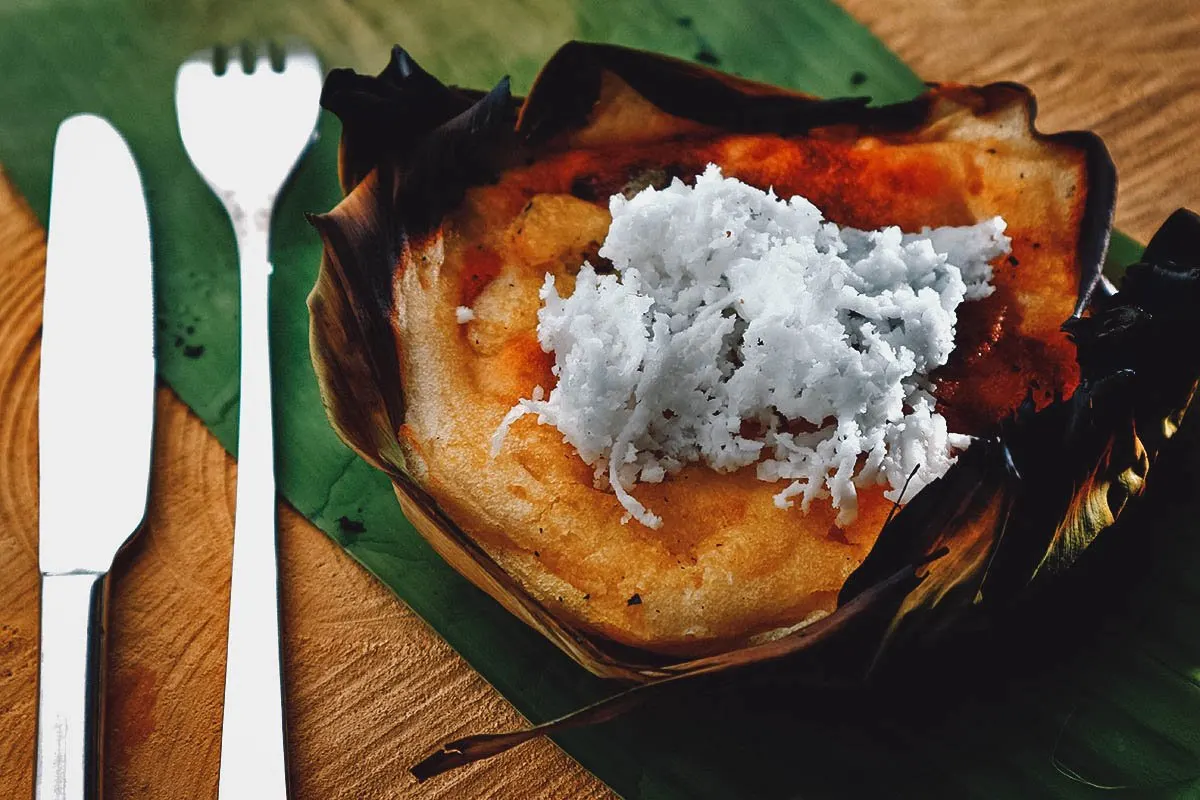
Photo by junpinzon
12. De Lata
De lata is a Spanish phrase that literally means “from a can”. It refers to commercially processed Filipino foods – mostly meats – packaged in cans and sold at supermarkets and grocery stores.
Typically eaten for breakfast, some of the most popular de lata products in the Philippines include corned beef, vienna sausages, SPAM, luncheon meat, and sardines. With the exception of vienna sausages and sardines, which can be eaten directly from the can, de lata food products are usually pan-fried before being served, often with garlic rice and a fried egg.
I like all de lata food products but vienna sausages are definitely my favorite. I love eating them straight from the can as a snack. When I have them for breakfast, I usually pair them with some scrambled eggs and pan de sal.

Photo by Louella938 via Shutterstock
FINAL THOUGHTS ON FILIPINO BREAKFAST
I’m originally from the Philippines so I know Filipino breakfast like the back of my hand. One thing I was surprised about when reading other people’s articles on Filipino breakfast was how often tortang along was included.
Tortang along refers to a type of Filipino eggplant omelette that’s commonly enjoyed with banana ketchup and steamed rice. While it’s one of my favorite comfort foods in Filipino cuisine, I’ve never once had it or seen it served for breakfast. Neither has Ren.
Tortang talong may be included in some larger silog meals or hotel breakfast buffets but personally, it’s something I’d prefer to have as a side dish for lunch or dinner. It’s delicious so it’s something you should definitely try as well on your next trip to the Philippines.
In any case, I hope you enjoyed reading this article on popular Filipino breakfast dishes as much as I enjoyed writing it. We no longer reside in the Philippines so writing this article is definitely making me miss the Philippines – and Filipino food – even more.
Unless otherwise noted, stock photos via Depositphotos.

